Akiko Yano photos provided by the artist
Akiko Yano is as important of a musician as there has ever been. Her debut album, Japanese Girl, was released to critical and commercial acclaim in her home country of Japan. She became part of a group of musicians in Japan in the 1970s and 1980s that helped to shape the sound of popular music in the country whose ranks included the members of Yellow Magic Orchestra, Taeko Ohnuki, and Shigeru Suzuki. Since then she has released over thirty studio albums and has collaborated internationally with the likes of Thomas Dolby, Bill Frisell, Pat Metheny, the band Japan, and more. After nearly a decade away, Akiko recently announced two West Coast shows in October in San Francisco and Los Angeles. I talked to Akiko about her upcoming shows, her latest album, as well as some highlights from her vast career.
Tyler King: You have a couple of West Coast shows coming up in October in San Francisco and Los Angeles. How are you feeling about them?
Akiko Yano: I’m so excited! I haven’t been out there for maybe a decade, and I really can’t wait.
TK: Was there any reason for such a big gap since playing here last?
AY: That’s a good question, but the answer is, I don’t know exactly. Usually my schedule for the entire year is based around my shows and activities in Japan. I’m usually playing in the Spring, Summer, and the end of the year in Winter in Japan, and all of the time between I’m here in New York preparing. So I just haven’t had a lot of chances to put my attention into playing other places. But now I really want to meet new people and new fans, especially in this country!
TK: It really feels like you’ve had a second wind in terms of popularity and appreciation recently here in the United States. I think that part of that has to do with the record label Wewantsounds reissuing some of your back catalogue. How did you partnership with them begin?
AY: Wewantsounds found me and they realized the value of my old music. [laughs] And I really, really appreciate them.
TK: Do you know if there are any plans with them to continue reissuing more of your music?
AY: I’m not sure, but if they want to do that then I would love for them to continue.
TK: Do you remember the first time that you visited San Francisco and what that was like?
AY: It was probably with Yellow Magic Orchestra. I don’t know, it was a long time ago. I played by myself out there in the 1990s, but that was just one or two shows.
TK: What was that first North American tour with Yellow Magic Orchestra like?
AY: You know, we were young. [laughs] And we didn’t know what it really meant to play in a country other than Japan. But we were just musicians and we wanted to play. That’s it. And I always thought that Yellow Magic Orchestra was one of the greatest dance bands, so playing with them was a lot of fun.
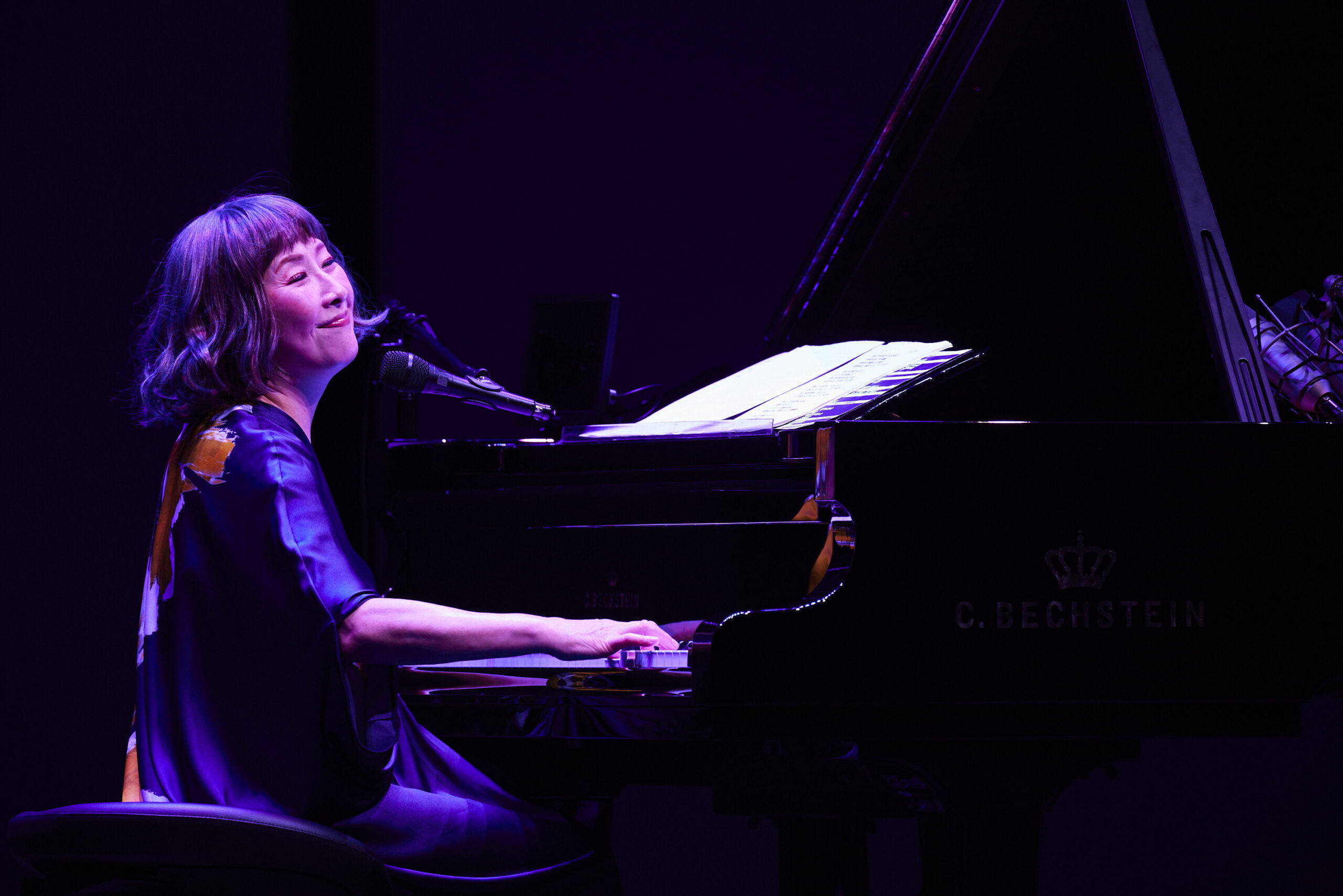
TK: You mentioned that you schedule your North American shows around your tours of Japan. What are the differences between playing shows in the two countries?
AY: When I play in New York city, I am the same musician with the same musical mind, although I have a slightly different audience. But the show and the songs that I provide are the same as when I play in Japan. The songs that I play and the order that I play them is a little different, but otherwise it’s the same.
TK: When you do a show that is just you on piano and vocals, do you play those shows with a prepared setlist, or do you play certain songs depending on the audience’s reaction?
AY: That does happen sometimes where I change the setlist based on the audience’s reaction, so it might happen again at some of my future shows!
TK: You’ve started playing shows in New York City with a trio. What was the decision to not bring them out for the shows in California?
AY: Well for those two shows the project is a little different than what I play in my trio. But I’m pretty versatile in every form of music! But regardless of if I’m playing solo or in a trio or in a bigger band, my musical mind is still the same.
TK: Going back a little bit, it seemed that there was a period of time of about a dozen years or so where every year you were releasing a new album and touring, both solo and in Yellow Magic Orchestra, and writing and recording with so many other artists. Do you ever look back at that period and wonder how you were able to accomplish so much in such a relatively short amount of time?
AY: I think that I was just fortunate to be within that music scene at the time. There might have been more outside factors, and the musical scene then is different than how it is right now. Between how it is now compared to the 1970s, it’s just crazy! [laughs]
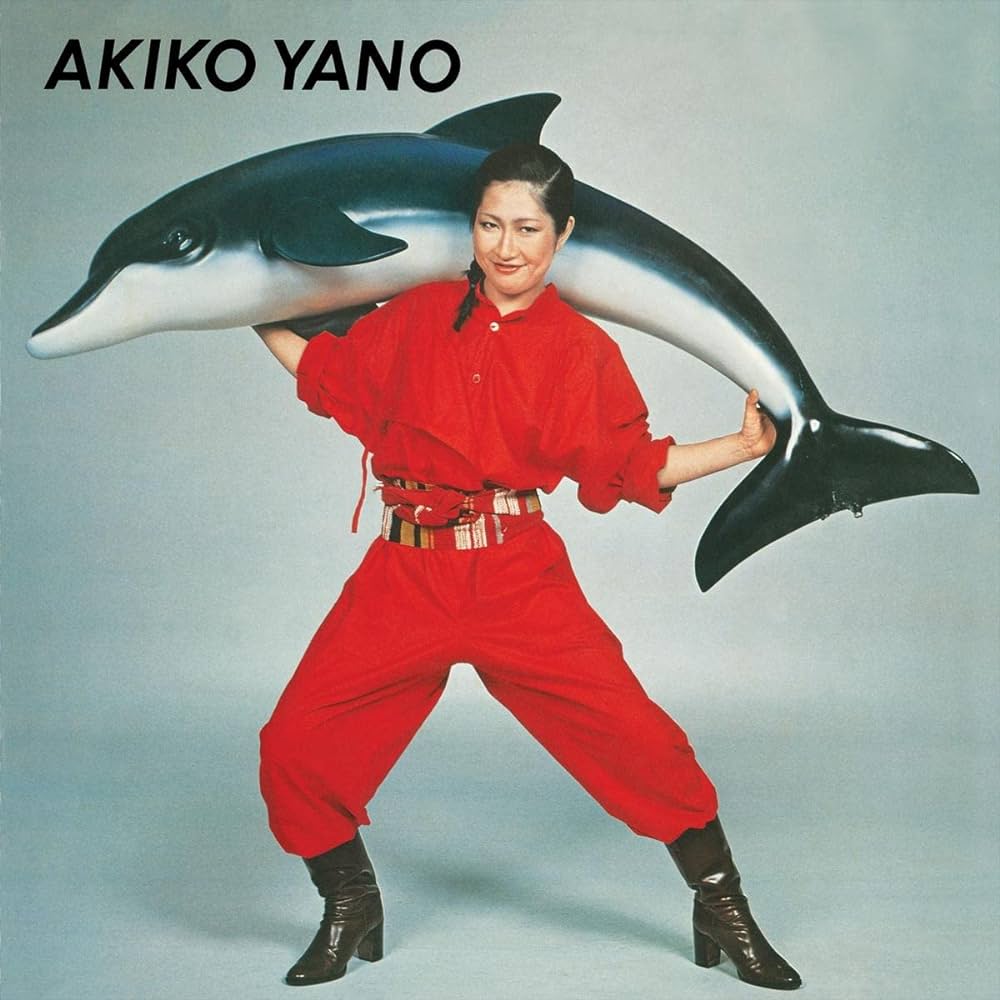
TK: One of the things that I love so much about your albums, besides the music, are the album covers. I’m wondering how important the covers are to you? I’m specifically wondering, on your album Iroha Ni Konpeitou there’s that amazing photo on the cover of you holding the dolphin over your head. How did that come about?
AY: Back then, I was heavily involved with a huge company that had a lot of department stores, and I did music for some of their commercials. In that era, I had that team who helped me with the commercials as my visual team. And that photographer I had, Bishin Jumonji, he was amazing and they did the cover of that album. The clothing was by Issey Miyake.
TK: Oh wow!
AY: He provided me his newest show material, which was for supermodels. But it was too big for me! And the idea for the dolphin was by my art director at the time, she brought that huge dolphin to the shoot. I think it was from one of the department stores! [laughs]
TK: It’s such a memorable image. It’s the kind of album cover where even if someone wasn’t familiar with your music, if they’re flipping through records at a store and saw that cover, they would instantly want to know what that album sounds like.
AY: Actually, there’s a correlation between those iconic covers and the music itself. That represented my vision for making music, which is it always stands out and it’s something new.
TK: My favorite album of yours from that time is Ai Ga Nakucha Ne. I’m wondering if you would be able to talk a little about what the recording process for that album was like? I’m also a big fan of the band Japan, and it’s this beautiful combination of your music with Ryuichi Sakamoto, as well as the drums of Steve Jansen and the bass Mick Karn, and it closes with that gorgeous duet that you did with David Sylvian.
AY: It was like a package of our relationships, that is Ryuichi and Japan. They were very close at that time, and I was close to them too. So in a way it was like a family album. [laughs] It was really natural for me to play with them, and personally I love the band Japan.
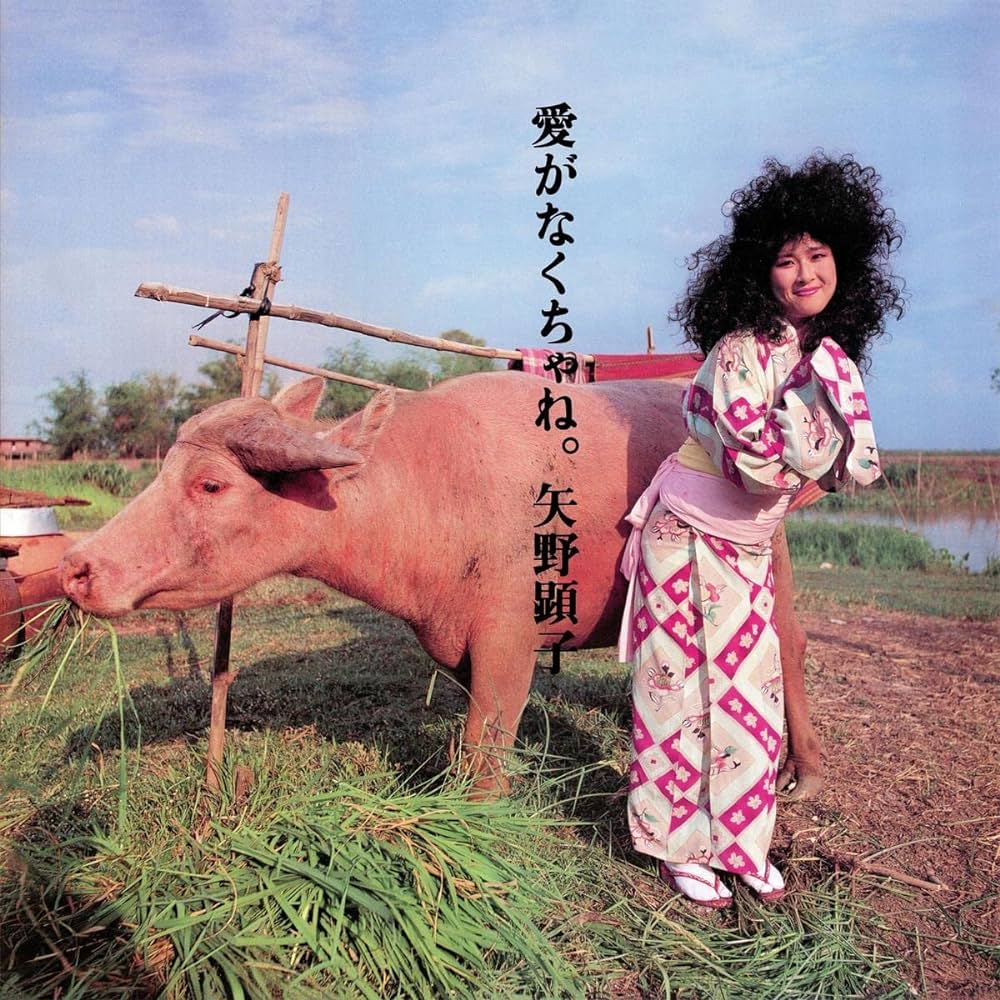
TK: You and Ryuichi were married for a number of years, but what was your creative relationship with each other like? He produced a few of your albums and you would play on some of his. What was that collaborative process like between the two of you?
AY: We were totally independent of each other. We were a married couple, but the things that we did were totally different, and we had our own creative places in our house. But we had mutual musical friends, and our musical tastes were not so different. So it was only natural to play music with him and his friends, who were my friends too.
TK: There was one composition of his, which he originally did with Yellow Magic Orchestra, that you’ve returned to a few times throughout your career, and that’s “Tong Poo.” What about that song made you want to make it your own?
AY: I just love that song. And of course originally we started playing it in Yellow Magic Orchestra, but I always really enjoyed playing that song. So I thought it was a good idea to put words on it that I really wanted to sing.
TK: I love your version of it. There are some days where I prefer the original and some days where I prefer yours.
AY: Thank you!
TK: Your album that came out last year, I Want To See You So Badly, was a collaborative album between you and the astronaut Soichi Noguchi. How did that collaboration come about?
AY: I started to be a space enthusiast about ten or fifteen years ago. But always the basis of my enthusiasm for space was the appreciation for it, because in order to live on this beautiful planet we need space. I always marveled at the things that we know and don’t know about space. To make a long story short, Soichi and I had a mutual friend who is a writer for a journal for space. She introduced the two of us to each other in New York, and he was interested in making music about space with me. Before he went to the International Space Station for the third time, I asked him to just write anything to me that he felt about space. And then I put the music over top of the lyrics, and that became the fourteen songs.
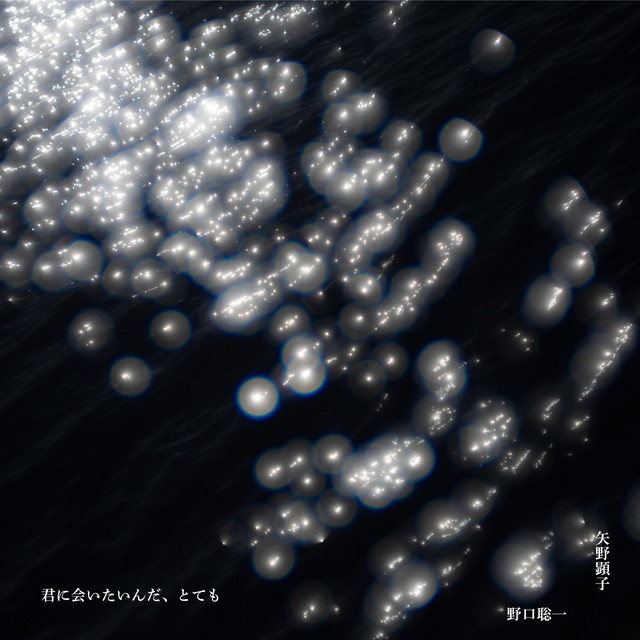
TK: It’s a beautiful record. It’s one of my favorites of yours. To go non-musical for a question or two: About three or four months ago, my wife and I decided to watch all of the Studio Ghibli films that we hadn’t seen already. When we got to My Neighbors The Yamadas, I was watching the opening credits, and it said, “Music By Akiko Yano!” I’m wondering how you became involved with that film, and also how you came to voice the sisters in Hayao Miyazaki’s film Ponyo.
AY: The director of My Neighbors The Yamadas, Isao Takahata, reached out to me and wanted to work with me. Scoring animation was something completely new to me, but I really liked his vision for the music. He was an amazing music lover, especially classical music. So it took a month to work on that film with him, but it came out as something I’m very proud of. With Ponyo, I think Hayao Miyazaki thought that I was an interesting person to work with him! I did some other stuff with Ghibli that is not publicly available, you can only see it in Tokyo at the Ghibli Museum there. That was a really interesting one, where Miyazaki, the comic Tamori, and myself are the voice actors, but there are no lines. It’s all onomatopoeias and sounds. So when it comes to a non-human voice, Hayao likes me.
TK: Besides collaborative records like the one you released last year, how has your writing process changed over time?
AY: My basic idea is writing songs and words that I want to hear. So in that way, I haven’t changed. But I tend to think about how my songs are heard and how they sound to everyone. I think that I’m finally a grown-up in that way! [laughs]
TK: Have you started working at all on what your next record will be?
AY: Making an album has changed in the current musical landscape. More and more, people want to listen to music on things like Spotify and YouTube. So making ten songs for a full CD or record, making songs in that style is different now, and it’s going to remain different from how it was. But right now I’m just focusing on each song, one at a time. And I’m still really enjoying it.
TK: Has that been similar to your approach in the past, where you just focus on one song at a time?
AY: I haven’t been seriously thinking about that, but I was totally involved with the mindset that making a full CD or record should be a certain way, with having ten songs and the perfect cover and crediting every musician in the liner notes. You know, I’ve been making records for a long time in that form. Record companies now are different, they’ve changed. And the audience is different, they’ve also changed. So I should be more flexible, and I want to be.
TK: You mentioned a couple of streaming services: Spotify and YouTube, etc. In North America, a large portion of your back catalogue is unavailable on a lot of the major streaming services, also including Apple Music and a few others. Is that something that might change further down the road?
AY: Actually, yes! We just started working on that.
TK: My last question is this: for the upcoming San Francisco and Los Angeles shows, is there any chance of bringing the dolphin out onstage?
AK: What I have planned might be a little different than that. [laughs]
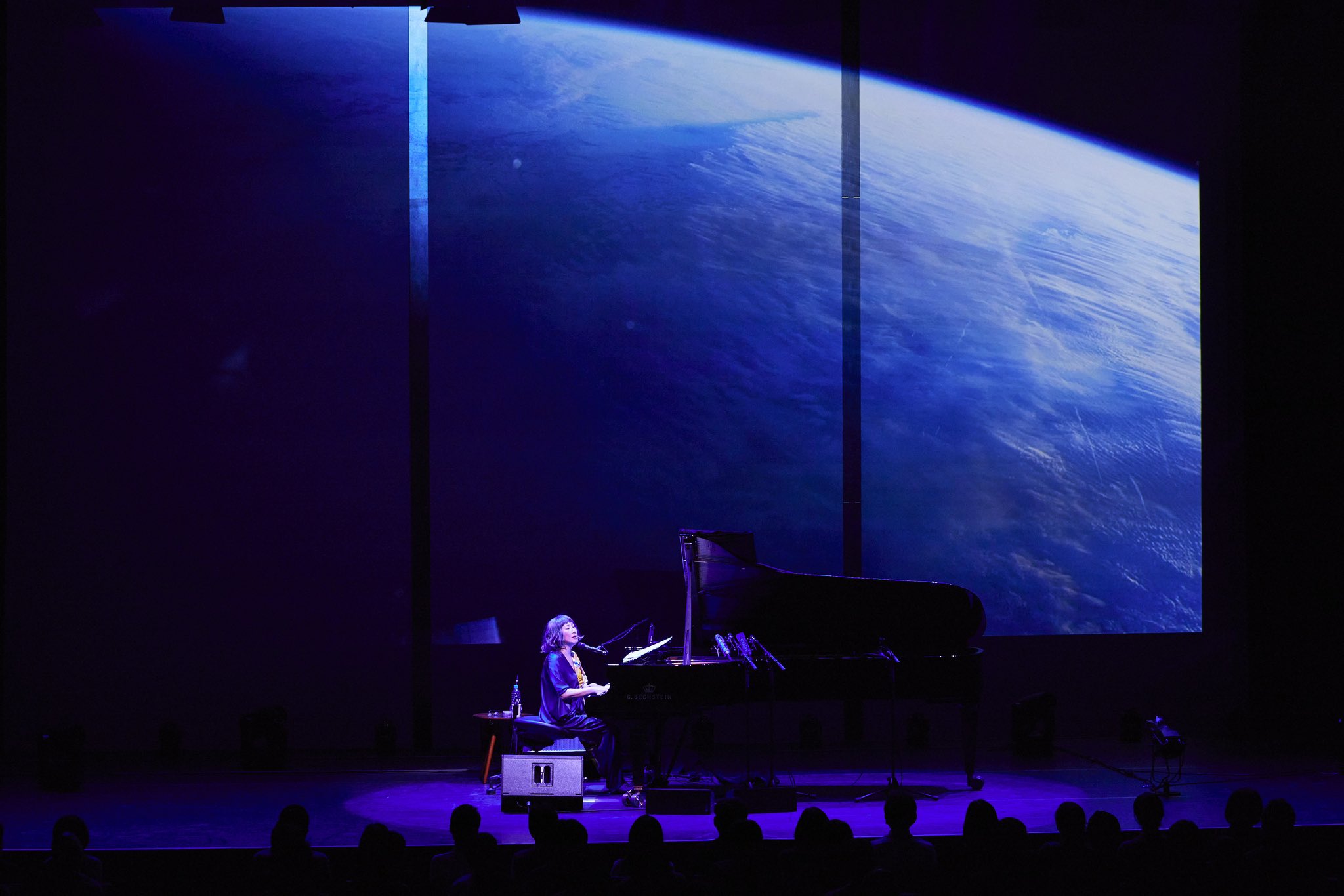
Visit Akiko Yano’s website here
Buy tickets to see Akiko Yano at the Great American Music Hall in San Francisco on October 10th here


